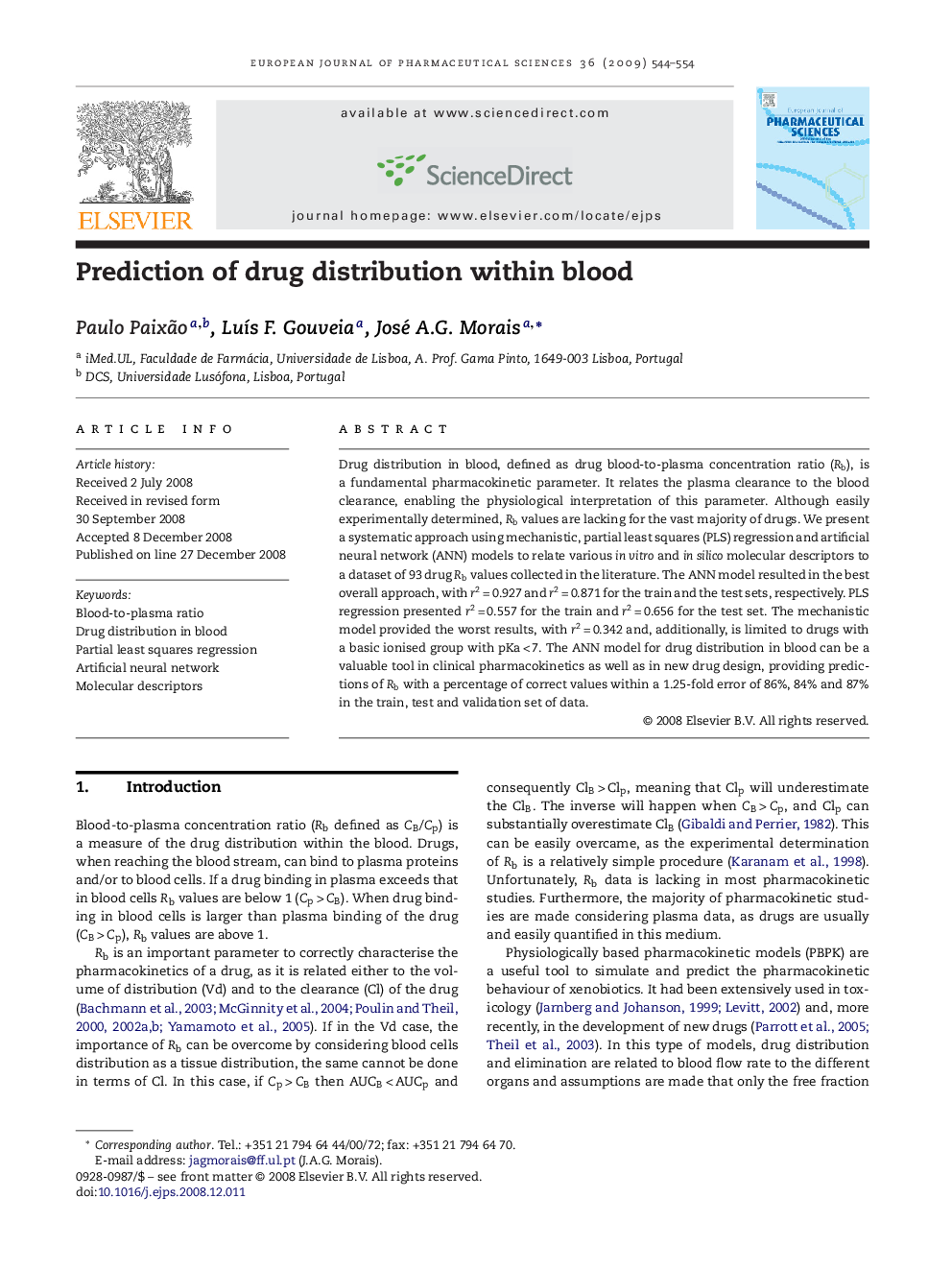| Article ID | Journal | Published Year | Pages | File Type |
|---|---|---|---|---|
| 2482156 | European Journal of Pharmaceutical Sciences | 2009 | 11 Pages |
Drug distribution in blood, defined as drug blood-to-plasma concentration ratio (Rb), is a fundamental pharmacokinetic parameter. It relates the plasma clearance to the blood clearance, enabling the physiological interpretation of this parameter. Although easily experimentally determined, Rb values are lacking for the vast majority of drugs. We present a systematic approach using mechanistic, partial least squares (PLS) regression and artificial neural network (ANN) models to relate various in vitro and in silico molecular descriptors to a dataset of 93 drug Rb values collected in the literature. The ANN model resulted in the best overall approach, with r2 = 0.927 and r2 = 0.871 for the train and the test sets, respectively. PLS regression presented r2 = 0.557 for the train and r2 = 0.656 for the test set. The mechanistic model provided the worst results, with r2 = 0.342 and, additionally, is limited to drugs with a basic ionised group with pKa < 7. The ANN model for drug distribution in blood can be a valuable tool in clinical pharmacokinetics as well as in new drug design, providing predictions of Rb with a percentage of correct values within a 1.25-fold error of 86%, 84% and 87% in the train, test and validation set of data.
